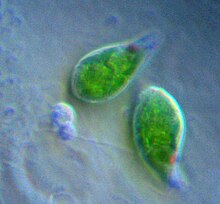Discicristata
In this article we will delve into the fascinating world of Discicristata, exploring its many facets and its impact on today's society. From its origins to its relevance today, we will analyze in detail every aspect of Discicristata, offering a complete and specialized overview that gives the reader a comprehensive understanding of this topic. Through detailed research, data and analysis, we will discover how Discicristata has influenced and transformed various aspects of everyday life, as well as its importance in contemporary culture. Focusing on its historical, social and cultural relevance, this article seeks to provide a broad and enriching overview that invites reflection and deep knowledge about Discicristata.
| Discicristata Temporal range:
| |
|---|---|

| |
| The heterolobosean protozoa species Acrasis rosea Olive & Stoian | |
| Scientific classification | |
| Domain: | Eukaryota |
| Clade: | Discoba |
| Superphylum: | Discicristata |
| Phyla | |
| Synonyms | |
|
Discomitochondria | |
Discicristata is a proposed eukaryotic clade. It consists of Euglenozoa plus Percolozoa.
It was proposed that Discicristata plus Cercozoa yielded Cabozoa. Another proposal is to group Discicristata with Jakobida into Discoba superphylum.

See also
References
- ^ Cavalier-Smith T (November 2003). "The excavate protozoan phyla Metamonada Grassé emend. (Anaeromonadea, Parabasalia, Carpediemonas, Eopharyngia) and Loukozoa emend. (Jakobea, Malawimonas): their evolutionary affinities and new higher taxa". Int. J. Syst. Evol. Microbiol. 53 (Pt 6): 1741–58. doi:10.1099/ijs.0.02548-0. PMID 14657102.
- ^ Cavalier-Smith T (1999). "Principles of protein and lipid targeting in secondary symbiogenesis: euglenoid, dinoflagellate, and sporozoan plastid origins and the eukaryote family tree". J. Eukaryot. Microbiol. 46 (4): 347–66. doi:10.1111/j.1550-7408.1999.tb04614.x. PMID 18092388. S2CID 22759799.
- ^ Hampl V, Hug L, Leigh JW, et al. (March 2009). "Phylogenomic analyses support the monophyly of Excavata and resolve relationships among eukaryotic "supergroups"". Proc. Natl. Acad. Sci. U.S.A. 106 (10): 3859–64. Bibcode:2009PNAS..106.3859H. doi:10.1073/pnas.0807880106. PMC 2656170. PMID 19237557.